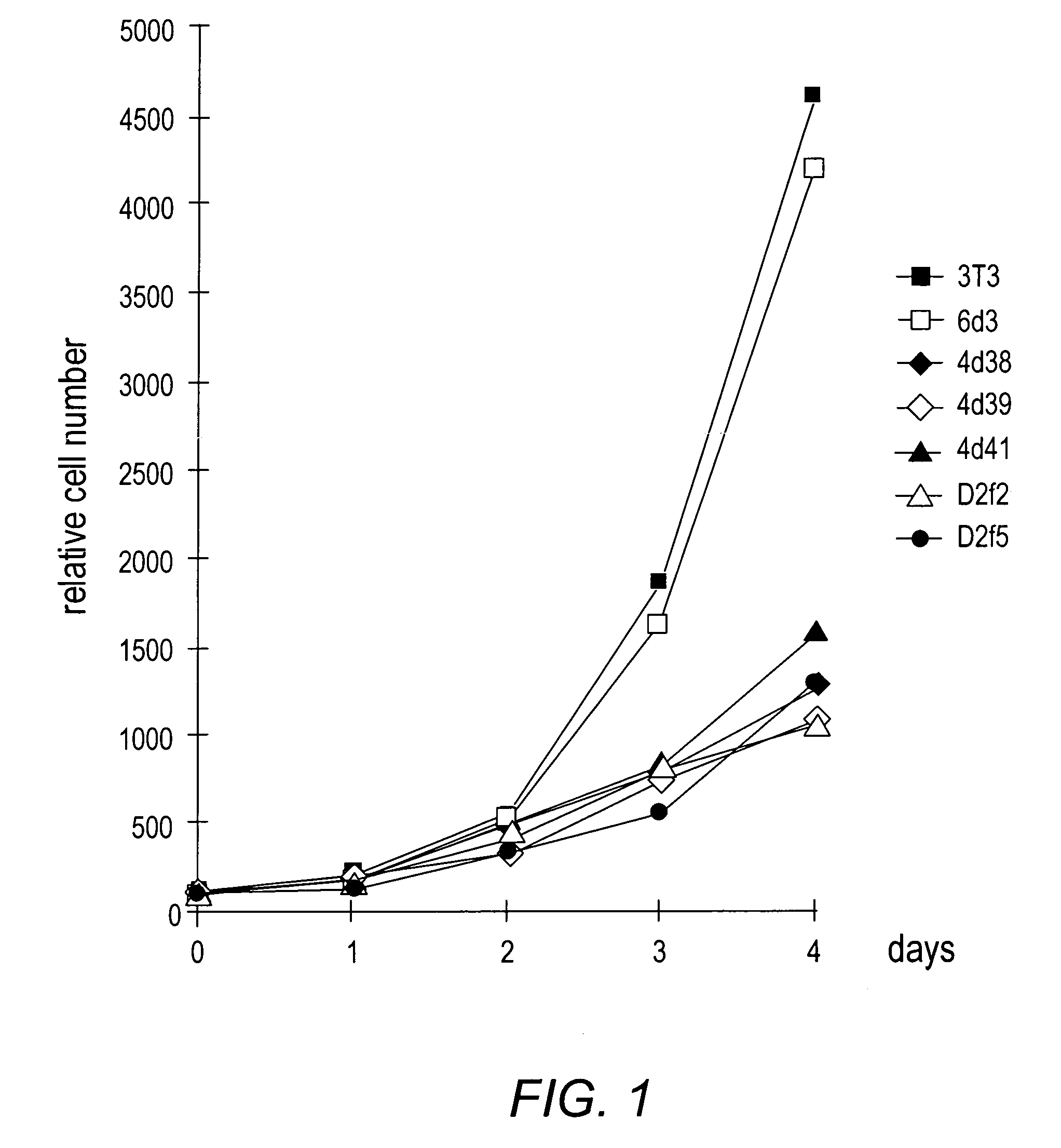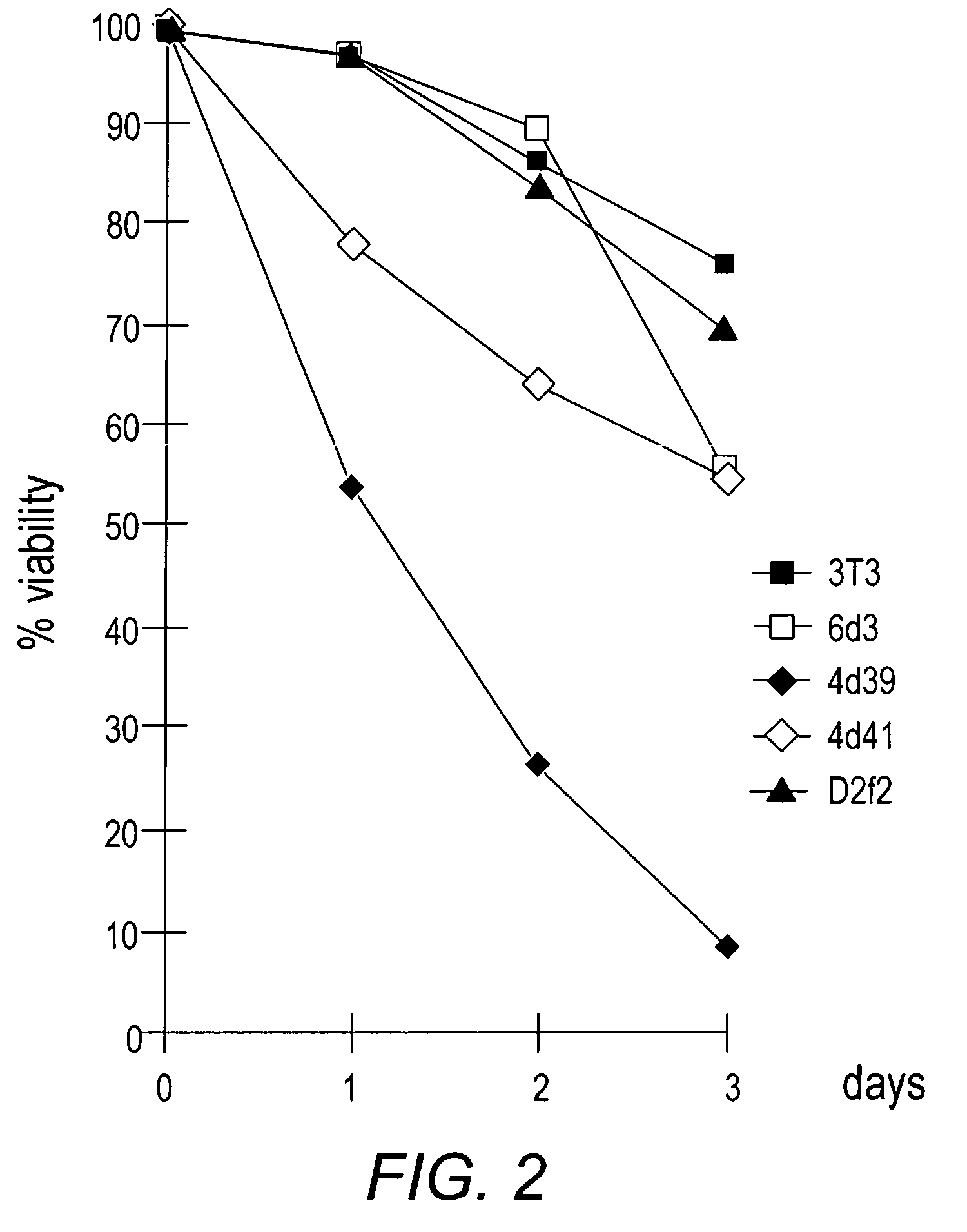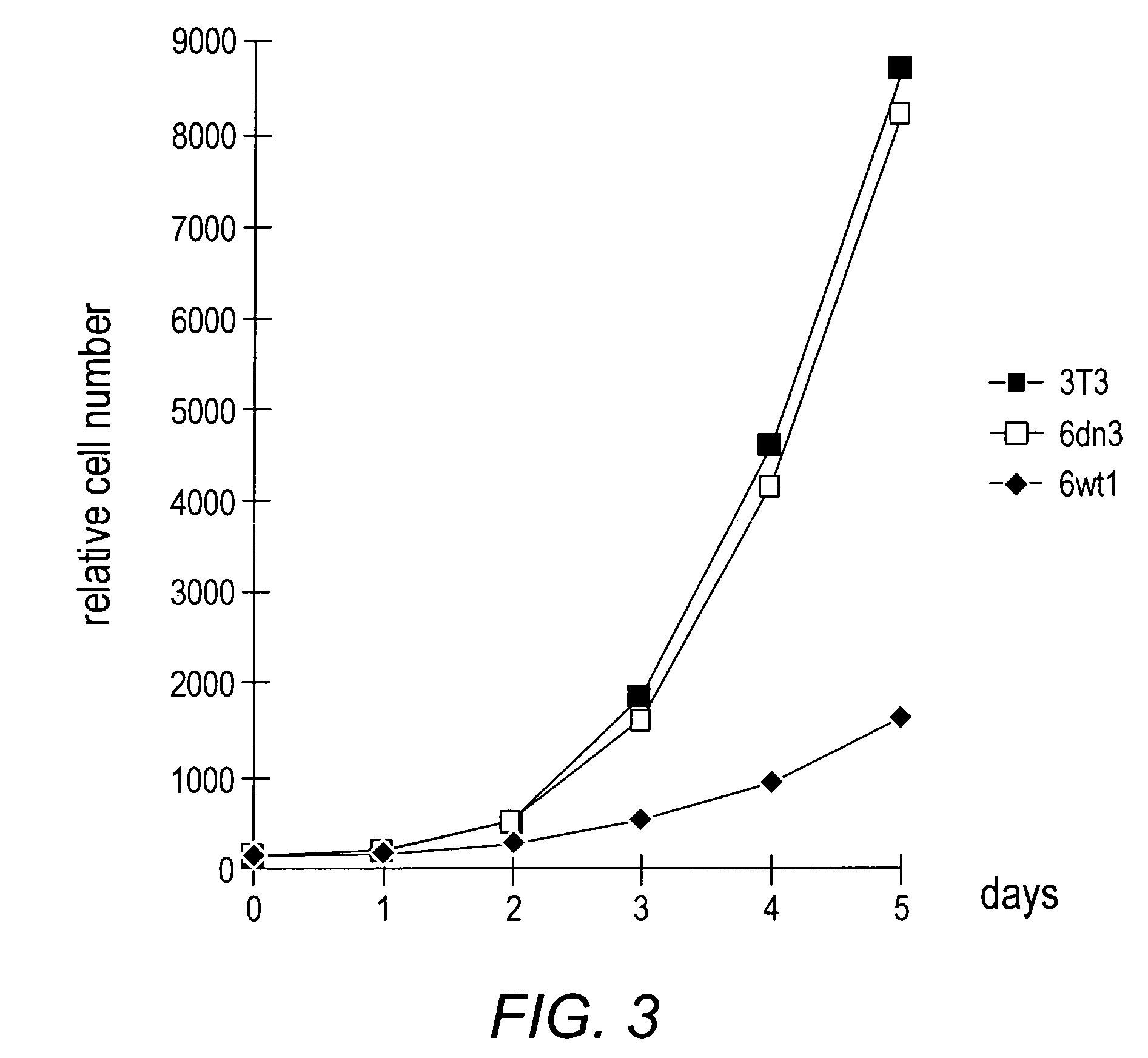Method for regulating cell growth and assays related thereto
a cell growth and assay technology, applied in the field of tumor cell growth assessment, can solve the problems of inability to demonstrate the enhancement or abrogation of cdk6 in the transfected u2os cells, interfere with cdk6, and small size of the mice, so as to increase the expression or biological activity of cyclin dependent kinase 6 (cdk6), inhibit the growth of the cell, and increase the activity of the cdk6 gene promo
- Summary
- Abstract
- Description
- Claims
- Application Information
AI Technical Summary
Benefits of technology
Problems solved by technology
Method used
Image
Examples
example 1
[0152]This example demonstrates that cell cycle regulatory proteins increase in amount after 3T3 cells are stimulated to leave a quiescent (GO) state.
[0153]The 3T3 cell line has been often used as a model for analyzing “normal growth control” in an in vitro system (Todaro et al., 1963, J. Cell Biol. 17:299–313). For the following studies, NIH / 3T3 cells (ATCC Accession No. CRL-1658) were cultured in 10% fetal calf serum (FCS). initial analysis of randomly growing 3T3 cells indicated that the cells contained cdk2, cdk4 and cdk6 proteins. However, whereas cdk2 nd cdk4 kinase activities were readily detected, virtually no cdk6 activity above the background levels associated with the assay were detected (data not shown). Therefore, cultures of resting 3T3 cells were examined as they were induced to synchronously enter and proceed through the cell cycle. For growth arrest, cells were incubated for 72 hrs in medium containing 0.1% serum. At this time they were in a pseudo-G0 arrested state...
example 2
[0154]The following example describes the isolation and characterization of stable transfectant cell lines expressing dominant-negative forms of cdk2, cdk4 or cdk6.
[0155]Plasmids encoding putative dominant-negative (dn) forms of the cdk2, cdk4 and cdk6 kinases were obtained (van den Heuvel et al., 1993, supra) and used to transfect 3T3 cells. Colonies stably expressing the encoded proteins were isolated and expanded. Although many colonies were isolated, the analyses presented here were limited primarily to two cdk2 dn clones, four cdk4 dn clones and three cdk6 dn clones. No discernible morphological differences among clonal lines were observed. The dn proteins are mutated in their ATP-binding sites and are thus inactive because they do not bind the nucleotide (van den Heuvel et al., 1993, supra). Since they can still bind appropriate cyclins, it is surmised that their dominant-negative effects are achieved through sequestration of the cyclins needed by the wild-type enzymes. In the...
example 3
[0159]The following example demonstrates the growth properties of cell lines expressing dominant-negative forms of cdk2, cdk4 or cdk6.
[0160]From the analyses described in Examples 1 and 2 above, it was clear that cdk2, cdk4 or cdk6 kinase activities were substantially abrogated in the cdk2dn, cdk4dn or cdk6dn lines, respectively. The effects on cellular proliferation were next examined. Growth curves were derived by examination of proliferation over a period of 5 days for parental 3T3 cells, two cdk2 dn lines (clones D2f2 and D2f5), three cdk4dn lines (clones 38, 39 and 41), and three cdk6dn lines (clones 3, 15 and 17) in medium containing 1%, 3% or 10% serum. Optimal growth of 3T3 cells is seen at 10% serum. Results showed that the growth of the cdk2dn and cdk4dn lines was clearly less than the parental cells, at all serum levels examined (data not shown). In contrast, no significant effects of cdk6dn expression on growth were seen. The growth curves for the three cdk6dn lines were...
PUM
| Property | Measurement | Unit |
|---|---|---|
| melting temperatures | aaaaa | aaaaa |
| ionic strength | aaaaa | aaaaa |
| temperature | aaaaa | aaaaa |
Abstract
Description
Claims
Application Information
 Login to View More
Login to View More - R&D
- Intellectual Property
- Life Sciences
- Materials
- Tech Scout
- Unparalleled Data Quality
- Higher Quality Content
- 60% Fewer Hallucinations
Browse by: Latest US Patents, China's latest patents, Technical Efficacy Thesaurus, Application Domain, Technology Topic, Popular Technical Reports.
© 2025 PatSnap. All rights reserved.Legal|Privacy policy|Modern Slavery Act Transparency Statement|Sitemap|About US| Contact US: help@patsnap.com



